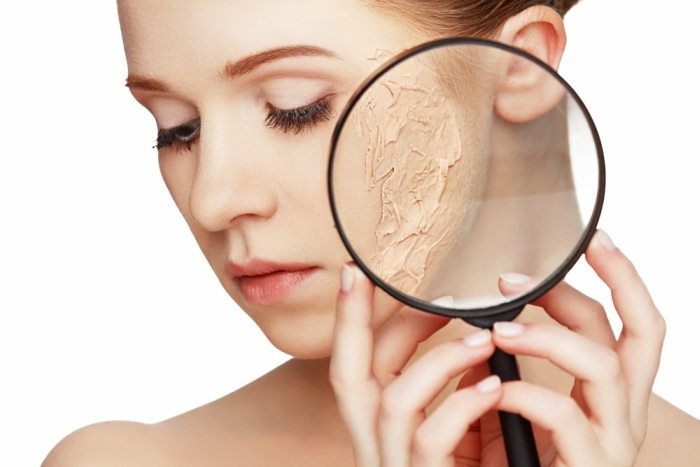12 Warning Signs That You Might Have Diabetes
These red patches on your legs are the first indication that you might have diabetes. Medically known as necrobiosis lipodica, they can be serious if you don’t get it checked in a timely manner. Excessive urination and blurred vision are also warning signs. If you notice any of these, see a doctor immediately. They could be early signs of diabetes and lead to other complications.
Hyperglycemia
If you have diabetes, you may notice a rash that looks like a pimple but is actually a yellowish substance. The rash is typically on the hands or back of the legs, but can also occur on the face or upper back. It may be thick and uneven and may also cover your ankles. You may find it difficult to bend your arm, and it may even resemble a dry skin problem.
Doctor’s Instructions
If you notice any of these symptoms, you should see a doctor right away. If you notice changes in your vision, your skin, or feel numbness or tingling, you should see a doctor. Bring your blood sugar records, as well as any medications you take. Make sure you follow your doctor’s instructions carefully, because you may need to fast to obtain accurate blood glucose results. You should also bring a list of your medications and any questions you have regarding diabetes. Hyperglycemia is not always visible immediately, but you should take the time to get your blood levels checked as soon as possible.
High Blood Sugar
High blood sugar levels in your body can also cause you to experience swollen eyes. This condition is a sign that your blood sugar is high and that you may have a high risk of developing a diabetic coma. Your eyes may also be affected by fluid leakage and blurred vision. These are just a few of the warning signs of diabetes that appear on your skin.
Acanthosis Nigricans
This skin disorder is characterized by thick, dark patches and streaks on the body. It most commonly affects the groin, neck, and axillae areas, but can also occur on other parts of the body. Diabetes and certain drugs are known to increase the risk of AN. If you notice these streaks, you should see a doctor. There are several ways to treat this skin condition.
The first step in determining the presence of acanthosis nigricans is to perform a blood test. An elevated level of glucose in the blood is considered a warning sign of diabetes. This is also known as impaired fasting glucose. It is also important to notice the rash because it could be a sign of diabetes. People with this skin condition may notice a velvety, blue-purple rash on their skin.
Common Warning Sign of Diabetes
Although acanthosis nigricans is a relatively common warning sign of diabetes, it is often difficult to identify unless you can see the rash on your skin. However, your doctor can run a blood test to find out whether you have the condition. Alternatively, your doctor can run blood tests to determine insulin resistance and to monitor your blood glucose levels. A small skin biopsy may be necessary to rule out other causes.
Blurred vision
If you notice blurred vision, it may be a sign that you have a high blood sugar level. If so, you should visit your doctor immediately. It your blood sugar level is too high, your vision will be blurry for several hours. However, once your levels fall back to normal, your vision will be sharp. If your vision becomes blurry for several days, you should visit your doctor.
Hormone Insulin
This problem occurs when the body fails to produce the hormone insulin. Insulin is responsible for distributing glucose to the cells. Too much glucose in the bloodstream can damage blood vessels, nerves, and the eyes. Blood sugar that is too high can cause the macula to swell. This swell can cause blurred vision. Diabetes is often difficult to diagnose, but treatment is available. Diabetics must get their blood sugar levels under control to avoid vision loss.
Best Course of Treatment
While it can occur occasionally, if the problem occurs regularly, it can lead to a medical emergency. While you may be able to treat hypoglycemia by eating sugary snacks or drinking sugary drinks, the first step is to see an eye doctor. This doctor will be able to diagnose the condition and determine the best course of treatment. In some cases, the condition may not be diagnosed until it becomes more advanced.
Excessive urination
Experiencing frequent urination may be a warning sign of diabetes. This is because frequent urination can lead to chronic kidney problems. During urination, the body diverts water to the urine to flush out excess sugars. As a result, the urine is empty more quickly than usual and leads to dehydration. In extreme cases, excessive urination may indicate diabetes.
Frequent urination can indicate a high blood sugar level, as high blood sugar causes the kidneys to work harder to filter the blood. When the blood sugar levels are too high, the kidneys must excrete the excess glucose through urine. Because sugar in the urine feeds bacteria and yeast, frequent urination is a warning sign of diabetes. The frequent urination can rob energy and wake people from sleep.
Frequent Bowel Movements
In addition to frequent urination, frequent bowel movements are another warning sign of diabetes. Frequent trips to the bathroom are one of the most common symptoms of diabetes, but frequent urination can also indicate that you are drinking too much water or caffeine. If you notice any of these symptoms, visit your doctor. The cause of your frequent urination may be kidney failure or a condition known as diabetes insipidus.
Open sores
People with diabetes are more prone to developing sores and ulcers. Ulcers are open sores that don’t heal properly. They often appear on the feet and legs but can also develop on the hands and folds of skin on the stomach. Because of this, diabetes patients should have their blood sugar levels checked as soon as possible. Here are some other symptoms that indicate that you may have diabetes.
Sores & Ulcers
Sores and ulcers can occur on any part of the body, but diabetic foot problems are more common in those with the condition. This is because diabetes can affect the nerves in the feet and legs, causing them to be harder to feel. Because blood flow in the feet is compromised, wounds and ulcers may be difficult to heal, especially in the extremities. Moreover, diabetes reduces the body’s ability to fight infection, making it harder to treat sores and ulcers. If left untreated, wounds may eventually lead to gangrene.
Besides being a warning sign of diabetes, open sores can also be an early indicator of diabetic neuropathy. Diabetics have problems with the nerves in their feet, so small cuts can become ulcers if left untreated. They may also experience other symptoms, including numbness or tingling. Further, untreated wounds can become infected and cause further damage.
Red Patches
Red patches on the legs can be an early warning sign of diabetes. This condition is also known as necrobiosis lipodica. It occurs in people with uncontrolled diabetes and may not be contagious. If you experience this condition, visit your doctor to find out the cause. The best treatment for the condition is better diabetes control. However, if you notice that your skin has a thick, waxy sheen, you should seek immediate medical attention.
Tight, waxy skin is one of the most common signs of diabetes. It may start on the hands and spread to the arms and upper body. It may also develop on the knees, ankles, and elbows. The skin may also have an orange-peel appearance. If you notice tight skin on your feet or hands, you should see a doctor immediately. You may also notice painful blisters and red, raised patches on your lower legs.
Blisters
Blisters can appear anywhere on the skin and are a common indication of diabetes. They are typically white with no red surrounding them. If your skin starts developing blisters on your feet or legs, you may have diabetes or other problems that affect the nerves and blood vessels. Your dermatologist will be able to prescribe the right medications and treatment to keep your skin healthy. There is also a high possibility that your diabetes treatment plan will need to be adjusted.
Infections
Diabetics are at increased risk of infections in many organ systems, including the lower respiratory tract and mucous membranes. These infections often cause diabetes complications, including an increased incidence of mycotic infections. More research is needed to better understand how infections are caused by pathogens and develop strategies to prevent these problems. For now, however, we can expect more infections to be seen in diabetic patients. Here are some of the most common infections in diabetic patients.
Various studies have suggested that the immune system of diabetics is vulnerable to bacterial infections, and these infections can have serious consequences. Chronic infections can cause the release of proinflammatory cytokines, which contribute to insulin resistance and poor glycemic control. Diabetes can also lead to abnormalities in the microbiota. These differences may be responsible for the increased risk of infections. Diabetes is often the first sign of diabetes and infection in this population can be quite serious.
Final Words:
Fortunately, infections in diabetics can be treated. Although the frequency of infections in diabetics is significantly higher than in control populations, many types are treatable with appropriate medications. Patients with diabetes should consider immunization against the common causes of infection. The American Diabetes Association recently released guidelines regarding influenza and pneumococcal vaccines for diabetes patients, but they do not specify a specific approach. Despite the fact that infections are the most common cause of diabetes complications, patients with diabetes are often treated by their primary care physician.






More Stories
The Advantages and Disadvantages of Diamond Braces
The NYC Doe Health Screening | Completely Guide 2022
Liberty Health Sciences: Investor & Operator in the Medical Cannabis Industry